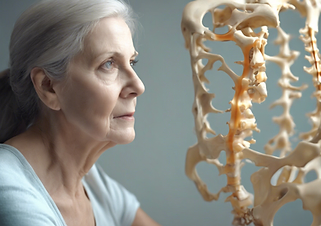Empowering Women’s Health: The Impact of Medical Technology
Robinett Espinal
January 2024
In the constantly changing field of medicine, the relationship between women’s health and technological breakthroughs is a bright spot of hope and progress. We are living in a new era where cutting-edge medical advancements combined with the unique healthcare needs of women have improved the diagnosis, treatment, and overall well-being of women globally. In addition to improving the accuracy of medical procedures, this intersection has created opportunities for a more proactive and individualized approach to women’s health. As we explore the complex relationship between women’s health and the rapidly developing field of medical technology, a significant shift is taking place that could lead to improved healthcare outcomes for women around the world.
Diagnosis
One of the most significant impacts of medical technology on women’s health is apparent in the realm of diagnostics. Modern imaging methods have improved the precision and early identification of breast cancer, including AI-enabled ultrasounds and three-dimensional mammography. With the use of these technologies, medical personnel may see breast tissue more thoroughly and detect abnormalities early on, when they can be more effectively treated.

More proactive approaches to women’s health have been made possible by advancements in genetic testing, which extend beyond breast cancer. Genetic testing, like the BRCA test, can reveal a person’s vulnerability to inherited diseases. Preventive treatments can be chosen wisely by women with a greater risk profile, opening the door to early interventions or customized screening procedures. The capabilities of medical technology are further increased by the use of artificial intelligence in diagnostic procedures. AI algorithms are capable of identifying trends and abnormalities, which is especially helpful for women’s health since an accurate diagnosis is essential for a positive prognosis.
Medical technology has a significant influence on the diagnosis of illnesses affecting women. This combination of advances, ranging from genetic tests revealing inherited disorders to imaging methods that improve the accuracy of breast cancer detection, leads to a more proactive and customized approach to diagnosis. The diagnostic landscape for women’s health is expected to flourish from continued improvements in technology, which present new opportunities for early intervention and improved treatments.
Treatment
Technology has been instrumental in the development of new treatment techniques. Surgical operations, where robotic-assisted surgery has refined techniques and greatly enhanced results, are one of the main fields in which these developments shine. Robotic-assisted surgery allows for more accurate, minimally invasive surgeries by fusing the precision of robotic equipment with the experience of doctors. Utilizing robotic devices allows doctors to perform intricate treatments with greater ease. Gynecological surgeries are made less invasive as robotic-assisted surgery allows for tiny incisions that lessen the physical toll on patients and speed up the healing process. The technological breakthroughs allow women to return to their regular lifestyles with faster recovery time.
The use of assisted reproductive technology has revolutionized the field of reproductive health. For some couples struggling with infertility, in vitro fertilization (IVF) has emerged as a ray of hope. Technological breakthroughs in IVF, including pre-implantation genetic testing, have considerably improved success rates. The healthiest embryos can be chosen for implantation with the help of time-lapse imaging, which makes it possible to monitor embryo development continuously. Genetic problems can be identified thanks to PGT, increasing the chances of a successful pregnancy.
Women now view their general well-being in a completely different way as a result of the incorporation of digital health solutions. Telehealth services have improved accessibility to healthcare by enabling women to consult with medical professionals online. With this, women in underserved or rural areas can receive specialist treatment without having to travel far. Health applications and wearable technology have given women the power to take an active role in their healthcare journey. From monitoring exercise and diet to tracking menstrual cycles, these technologies offer insightful data that advances our understanding of people’s health comprehensively.
Women now have more effective and individualized healthcare alternatives thanks to the merging of women’s health and medical technology, which resulted in a new era of improved treatment techniques. Given the ongoing growth in medical science, it seems likely that the options available to women seeking medical care will continue to improve.
Overall Health
By incorporating technology into healthcare procedures, women’s general well-being is being positively transformed. Innovations in technology have acted as catalysts to enhance women’s health in many areas, leading to a more customized and comprehensive approach to care.
Women are now more equipped than ever to actively monitor and manage their health thanks to digital health solutions like wearable technology and health apps like Flo. These technologies offer insights into many aspects of health, including measuring activity levels, dietary consumption, and menstrual cycle tracking. Technology empowers women to make lifestyle decisions that enhance their general well-being by encouraging a proactive and knowledgeable approach.
The incorporation of technology has also aided in supporting women’s mental health. Women have access to techniques for stress reduction, relaxation, and emotional health through mental health applications and internet resources. These resources’ accessibility aids in addressing mental health issues and promoting an expanded approach to general well-being. The relationship between women’s health and advances in medical technology is a source of great hope for future improvements in general well-being as technology develops. Technological healthcare innovations are creating opportunities for women to have more agency, information, and tailored support when navigating their health journeys, which will ultimately lead to a comprehensive improvement in their well-being.



